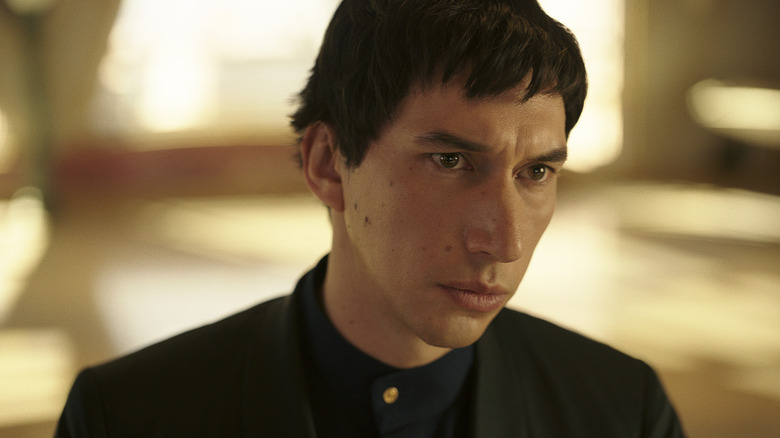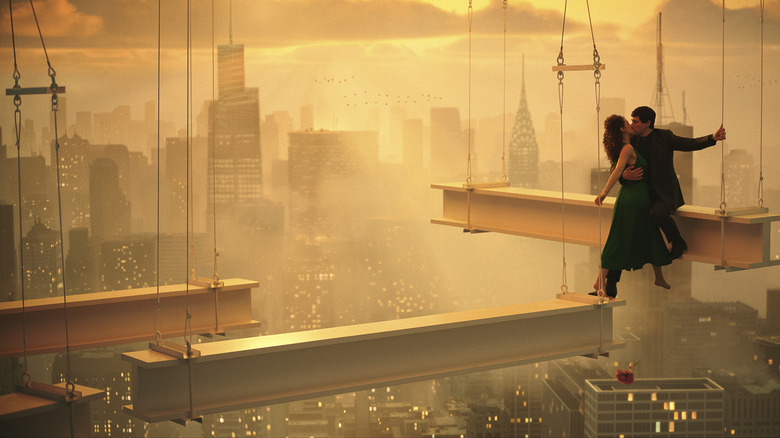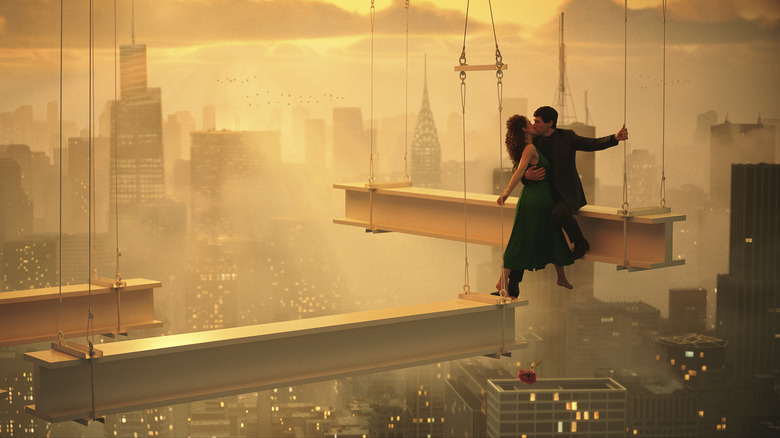Megalopolis Review: Francis Ford Coppola's Passion Project Is A Big, Beautiful Mess That Must Be Seen
Francis Ford Coppola has been dreaming about making "Megalopolis" for more than 40 years, and now, after decades of starts and stops, he delivers it to us and dares us to make sense of it all. A sprawling, confusing, confounding, messy extravaganza, "Megalopolis" feels like it needs an entire companion textbook to parse out its influences and meanings. Coppola has jam-packed the movie with a million different ideas, drawing on such wide-ranging sources as Ayn Rand's "Atlas Shrugged," Robert Caro's "The Power Broker," and the Catilinarian conspiracy, in which politician Lucius Sergius Catilina tried to seize control of Rome in 63 BCE. Coppola also seems to be drawing on his own work, most notably two of his biggest flops, "Tucker: The Man and His Dream" and the sort-of-musical "One From the Heart."
Having helmed some of the best movies in the history of the medium, Coppola has earned the benefit of the doubt here. "Megalopolis" may be a mess, but gosh, it's a beautiful mess — an unapologetically earnest film aching to be seen on the biggest screen possible, even if some of its imagery is ugly and flat thanks to questionable visual effects. After failing for so long to get the movie off the ground, and set back by years of box office disappointment, Coppola funded the film himself, putting up an eye-popping $120 million to get "Megalopolis" made on his own terms. The final result arrives on a wave of behind-the-scenes rumors and controversies (Coppola is currently suing Variety over some of those rumors), and also the foregone conclusion that the movie will ultimately flop.
But a movie's box office does not determine its quality, and one has to assume that the 85-year-old Coppola isn't really concerned with "Megalopolis" being a hit at this point. He just wants people to see it, and see it they should, flaws and all. In an era where Hollywood dreck becomes more homogenized and dictated by venture capitalists who don't give a flying f**k about actual art, the fact that "Megalopolis" exists at all is something of a miracle. I do not love the final film itself, but gosh, I love that I got to see it.
Megalopolis is set in a future inspired by Ancient Rome
Set in the future, "Megalopolis" takes place in New Rome, which is basically modern-day New York City blended with Ancient Rome (e.g., Madison Square Garden has become the Colosseum, complete with chariot races). Two of the most powerful men in this city are Mayor Franklyn Cicero (Giancarlo Esposito), a politician who wants things to stay the same, and Cesar Catilina (Adam Driver, sporting a terrible haircut), a celebrity architect who dreams of change. It's impossible to look at Catalina, a man who bucks up against the system, and not draw connections to Coppola, an artist who struggled for years to work outside the studio machine and create art on his own terms. Coppola has dedicated "Megalopolis" to his late wife Eleanor, who died earlier this year, a fact that the filmmaker could not have predicted while he was shooting "Megalopolis." And yet, there is indeed an instance of art imitating life, as the film contains story beat about Catalina being haunted by the death of his beloved wife.
Catalina has developed a mysterious substance known as Megalon, and he wants to remake the city with it, creating impossible buildings and landscapes that defy all laws of physics and gravity. And oh yeah, he also has the ability to literally stop time, something Coppola highlights in a stunning opening scene where Catalina climbs to the top of the Chrysler Building and commands time to stop to avoid falling to his death. Here, again, one can make connections between the character and Coppola himself — a film can be seen something that is able to stop and contain time itself, and even wind it back if possible.
There is nothing but bad blood between Catalina and Cicero, especially because before he was mayor, Cicero was a prosecutor who accused Catalina of murdering his wife. The rift between the two men is further complicated when Catalina falls for Cicero's daughter, Julia (Nathalie Emmanuel), who sees something truly special in Catalina despite his occasionally boorish behavior. Also mixed up in all of this: Catalina's obscenely wealthy uncle Hamilton Crassus III (Jon Voight, who seems intoxicated in every scene he has), Catalina's odious cousin Clodio (Shia LaBeouf), who cons his way into running for public office, and a schemining TV reporter named (wait for it) Wow Platinum, played by Aubrey Plaza. Dustin Hoffman also shows up at one point, although I honestly have no idea what his character is supposed to be doing or how he fits into the grand scheme of things. Of all of these cast members, Plaza fares the best, as she seems to be the only person who can match the film's bizzaro wavelengths.
We are lucky to have Megalopolis
Coppola paints New Rome as a place of decay and disarray. The mayor is ineffectual and against change, and yet, change is also painted as a problem: many of Catilina's building projects have displaced lower-class people of their homes, a fact that Clodio exploits for his own gain. Giant Romanesque statues come to life and move and bow their heads as if they're exhausted; debauchery reigns supreme; a pop star (Grace VanderWaal) is hailed for being a virgin; Adam Driver delivers the entire "To be or not to be" soliloquy from "Hamlet" for some reason; and oh yeah, there's an old Russian satellite headed towards Earth. Coppola cobbles all of these elements together in one bright, shining package, painting a portrait of rich and powerful people who can't sense their own downfall approaching.
"Megalopolis" is billed as "A Fable" in its opening title cards, which means Coppola isn't really interested in creating realistic, well-drawn characters with rich inner lives. They are merely ideas for the filmmaker to hang his strange, experimental narrative on. The world the film exists in never feels entirely real, complete with artificial backgrounds that either look stunning or hideous depending on the scene. At one point, the movie stops dead in its tracks so Driver's Catilina can answer a question from the audience. Characters speak in heightened dialogue that will occasionally make your head hurt. It's all rather overwhelming at times, and fascinating.
This is a film about the end of an empire, and yet, Coppola also jams a hopeful note into the proceedings. I say "jams" because in truth, the film does not earn its hopefulness, and yet, I appreciated it all the same. It's as if Coppola's film is saying that if hope can not come naturally, we must will it into existence, by force if necessary. "Megalopolis" is also a film about the act of creation — about making strange, challenging art, critics be damned. This has an ouroboros effect on the movie, as if the film is a serpent eating its own tail — it is a work of difficult art about the act of creating difficult art. With "Megalopolis," Coppola is returning to his dreams of art for art's sake — box office results don't matter, studio notes don't matter, focus groups don't matter. In Coppola's mind, all that matters is the work, and the act of creating it. We are lucky he returned to make a new movie, and even in its messy, muddled state, we are lucky to have "Megalopolis."
/Film Rating: 7 out of 10
"Megalopolis" opens in theaters on September 27, 2024.


